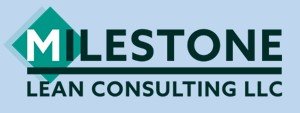5S - Bringing Lean to the Field
Most of our attention with Lean has been on owners, designers, engineers, superintendents and foreman. What about the other 90% of a project team? How can 5S benefit the construction industry? It improves productivity, quality, safety and schedule. It is a core lean method to bring Lean thinking to frontline workers in the field or shop. It is simple. It costs almost nothing. And you can start doing it today. 5S is a method to keep our workplace organized, clean, safe and efficient. It is called 5S because each word starts with “S”:
SORT - Determine what is needed and remove everything else
STRAIGHTEN - Set in order. A place for everything and keep it there.
SHINE - Clean and keep it clean… all the time.
STANDARDIZE - Create standard ways to stay clean and organized.
SUSTAIN - The self-discipline to keep it going
Some construction organizations enact this on site using three basic rules: (1) Nothing hits the ground, (2) Everything on wheels, and (3) Just-in-time delivery. It keeps work areas clear. It keeps material close to the work. And it keeps excess materials and tools off-site and out of the way.
It is Lean because it helps eliminate waste and makes work flow efficiently. But more than that, it is a basis for continuous improvement. How so? It involves everyone in the effort to improve their work area. It gets workers thinking and involved in improvement. It generates collaborative thinking and action. So, it becomes a foundation for building a culture of Lean problem solvers.
The key is what you focus on. If you think of 5S as simply rules to keep clean, it won't do much. If you think of 5S as a collaborative method to improve our work, you have started the engine of continuous improvement.
5S BUILDS A CULTURE OF CONTINUOUS IMPROVEMENT
Continuously improving organizations utilize the experience and insights of everyone. People see themselves as contributors to improvement. It is part of their job and they are recognized for their input. They learn to see waste and how to improve flow so that the ideas they offer are truly improvements in the delivery of value. Finally, there is a process in place to capture and implement the improvement.
5S becomes a foundation for all of this. How so? Because it involves everyone, is based in eliminating waste, and lays down an initial process for improvement. Gradually, the Lean culture develops. 5S is not complicated. And it doesn’t have to be perfect out of the gate. It will improve over time.
To get started and make the change “sustainable”, someone needs to be responsible. Sending out an email or memo is not sustainable. On a single jobsite this may be the superintendent. In an organization you need a champion with the knowledge, backing and time to build momentum.
Training should include everyone, including management. For those in the field, an hour of formal training is usually enough to get started. The best teacher is learning by doing. Put a simple assessment form in their hands and talk through it. For example, going to the first “S” of “Sort”, we might ask, “Is there anything out of place?”. Maybe there is a pile of left-over material. Why? Maybe it is good material, but we didn’t know what to do with it, so we put it in the bin/corner/yard/whatever. Did we order too much material? Do we need a process to not just deliver, but to also reuse excess? Now that the problem is uncovered, (which is clearly wasting time and resources and is a possible safety hazard) how will we address the problem?
Some improvements are simple, and teams handle it themselves. For much of our work, we are only a step in a process and for work to flow efficiently, we need to involve other departments, other trades, or managers. This where our improvement process comes in. How do we follow up when we see an opportunity to eliminate waste or improve flow? We need to do more than put it on a list. Foreman, supervisors and managers need to be involved. It is a basic function of their job. And when workers see their ideas implemented and their efforts recognized, you have opened the floodgates for improvement.
CONCLUSION
In summary, besides the initial benefits of applying 5S, such as a cleaner, safer and more productive jobsite or shop, it is a catalyst for building a culture of continuous improvement on your project or in your organization. The 5S assessment is not a scorecard. It is not an audit. It is a tool to help your team see waste, identify the root cause, and implement improvements. As individuals and the organization gain experience, see the benefits, and make improvement a part of daily work, they have achieved a major milestone in building a Lean organization.
